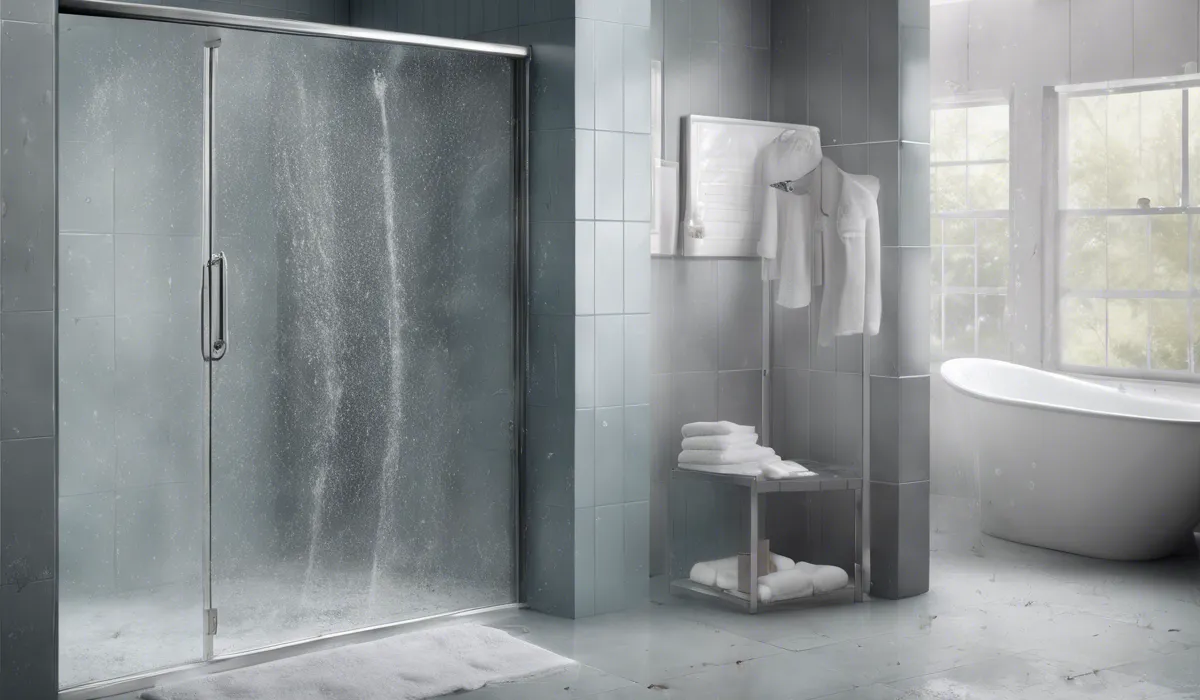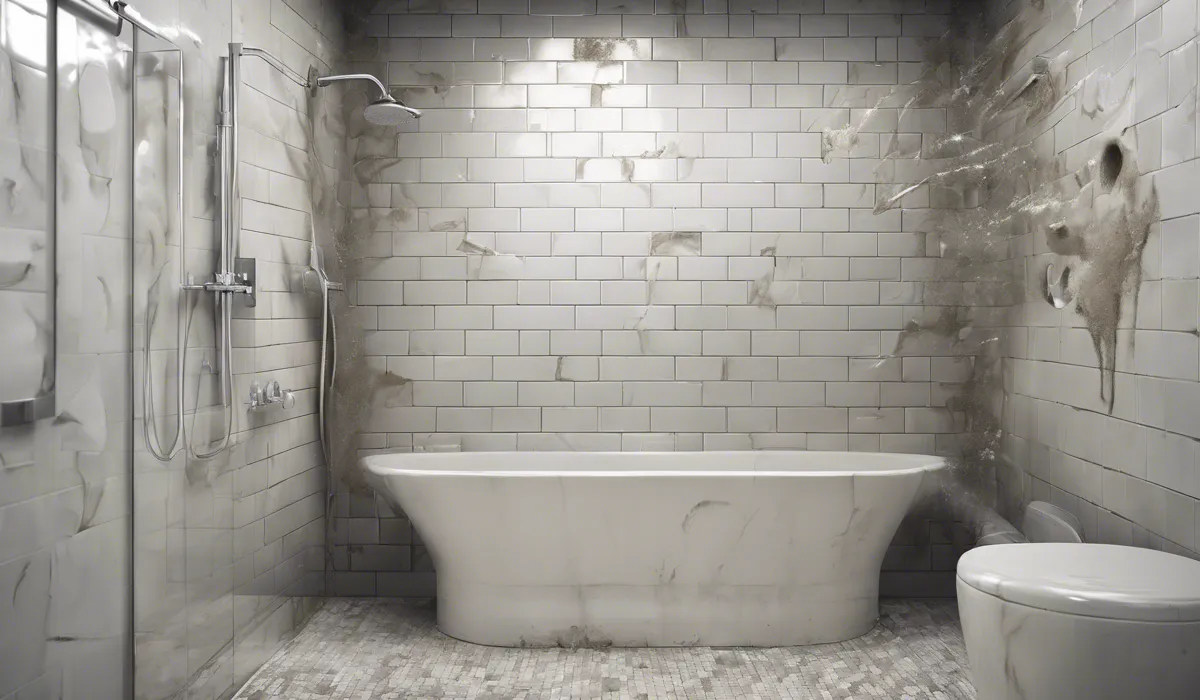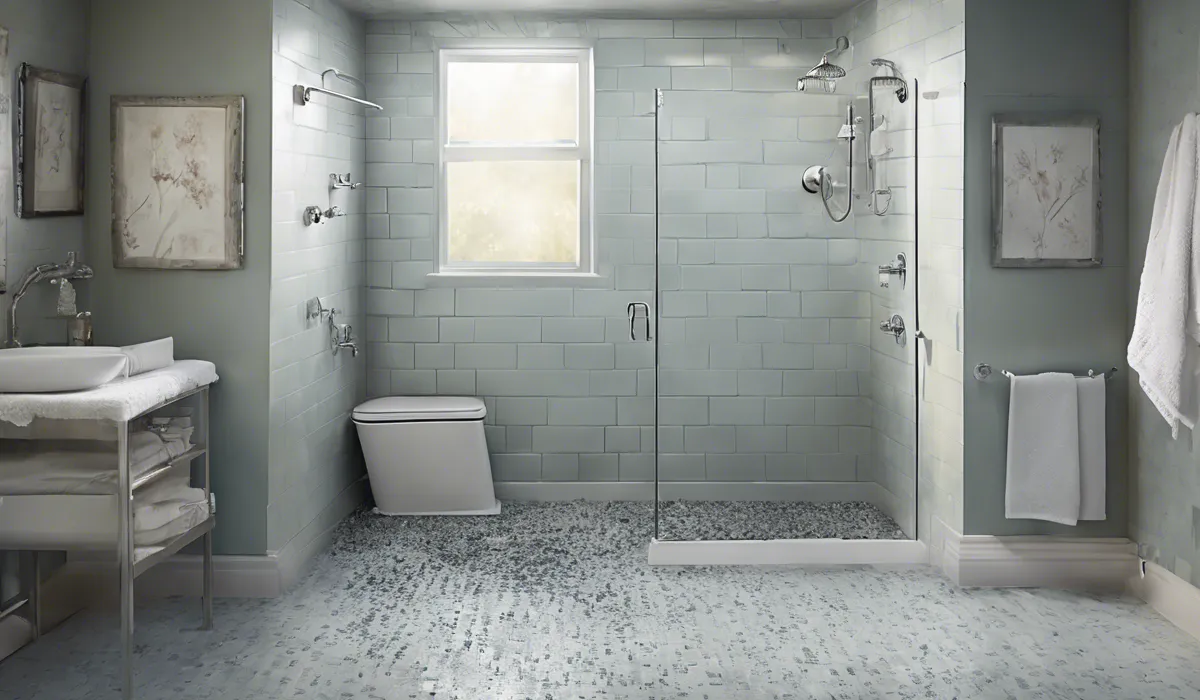Yes, mold in the shower can make you sick. It can cause respiratory issues, allergies, and skin irritation, especially in those with mold sensitivities or weakened immune systems. Prompt removal and prevention are crucial for health.
Understanding Mold in the Shower

Definition of Mold and Its Common Types
Mold is a type of fungus that can grow both indoors and outdoors. It’s part of the natural environment and plays a crucial role in breaking down organic matter.
However, when it grows inside, such as in your shower, it can become a problem. Common household molds include Cladosporium, Penicillium, Aspergillus, and the notorious Stachybotrys chartarum, also known as black mold.
Why Mold Thrives in Shower Environments?
Mold loves moisture, warmth, and organic material to feed on. Your shower provides all of these, making it a mold paradise.
Hot water and steam from your shower increase humidity, and common toiletries can provide the necessary nutrients for mold to grow.
Signs of Mold Presence in the Shower
You can often spot mold by its fuzzy or slimy appearance, which can range in color from black and green to white and orange.
A musty odor is another telltale sign. Be on the lookout for discoloration on walls, ceilings, and grout lines between tiles.
The Growth Cycle of Mold in Moist Areas
Mold starts as tiny spores that travel through the air. When they land on damp surfaces, they begin to grow and spread.
This can happen in as little as 24 to 48 hours under the right conditions. The cycle continues as the mold produces more spores, which then spread to other areas.
Health Impacts of Shower Mold

Immediate Health Effects of Mold Exposure
When you come into contact with mold, you might experience sneezing, coughing, watery eyes, or a runny nose.
Some people may get rashes or feel itchy. These reactions can happen quickly after being around mold in your shower.
Long-term Health Risks Associated with Chronic Exposure
Being around mold for a long time can lead to more serious health issues. It can affect your lungs and make it hard for you to breathe. Some people may develop conditions like asthma or have a higher chance of getting lung infections.
Vulnerable Groups and Heightened Health Risks
Certain people are more at risk when exposed to mold. This includes babies and children, the elderly, and those with weak immune systems or chronic lung diseases. These groups should be extra careful to avoid moldy environments.
Common Symptoms of Mold-Related Illnesses
If you’re sick from mold, you might have symptoms like headaches, breathing problems, or feeling tired all the time. Some people may also have memory problems or trouble focusing.
Connection Between Mold and Respiratory Conditions
Mold can trigger asthma attacks and lead to the development of asthma in people who didn’t have it before.
It can also make chronic lung problems worse. If you have a cough that won’t go away or you’re wheezing, it might be because of mold.
Prevention and Remediation Strategies

Daily Practices to Reduce Mold Growth in the Shower
Keeping your shower dry can stop mold from growing. Use a squeegee to wipe down the walls after you shower.
Make sure to wash your bathmats and shower curtains often, and don’t leave wet towels in the bathroom.
Cleaning Agents and Natural Remedies Effective Against Mold
You can clean mold with products like bleach, vinegar, or hydrogen peroxide. For a natural option, tea tree oil mixed with water can be a powerful spray against mold.
Always wear gloves and make sure the room is well-ventilated when you’re cleaning mold.
Professional Mold Remediation and When to Seek Help
If you have a lot of mold or it keeps coming back, you might need a professional to help. They can find where the mold is hiding and remove it safely.
If you have health problems from mold or it’s spread over a large area, get professional help.
Tips for Maintaining a Mold-Free Shower Environment
Use an exhaust fan during and after you shower to keep the air moving. If you don’t have a fan, open a window.
Regularly clean your shower and check for leaks that could make it damp. Keep household humidity levels below 50% if you can.
Importance of Ventilation and Moisture Control in Bathrooms
Good airflow helps to dry out the bathroom and reduces the chance for mold to grow. Fix any problems with fans or windows that don’t open. If you live in a humid place, think about getting a dehumidifier to pull moisture out of the air.
FAQs About Mold in the Shower and Health Risks
Can exposure to shower mold lead to respiratory problems?
Yes, exposure to mold in the shower can lead to respiratory problems such as coughing, wheezing, and difficulty breathing, especially in those with pre-existing respiratory conditions.
Are people with allergies more susceptible to mold-related illnesses?
Yes, individuals with allergies may be more susceptible to mold-related illnesses, experiencing symptoms like sneezing, itchy eyes, or nasal congestion.
Can mold in the shower cause skin irritation?
Mold in the shower can cause skin irritation, resulting in rashes or redness, particularly in sensitive individuals or those with mold allergies.
Is it dangerous for individuals with weakened immune systems to be around mold in the shower?
Individuals with weakened immune systems are at higher risk for health issues from mold exposure and should avoid moldy environments, including mold in the shower.
What should be done to address mold in the shower to prevent health problems?
Prompt removal of mold in the shower using appropriate cleaning solutions and ensuring good ventilation are crucial steps to prevent potential health problems.
Final Thoughts
Mold in the shower poses health risks, including respiratory problems, allergies, and skin irritation.
Those with mold sensitivities or compromised immune systems are particularly vulnerable. Addressing mold promptly through removal and implementing preventive measures is essential for maintaining a healthy living environment.
